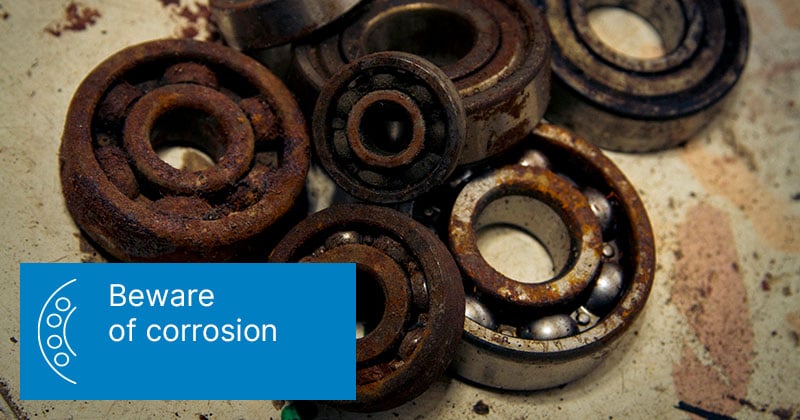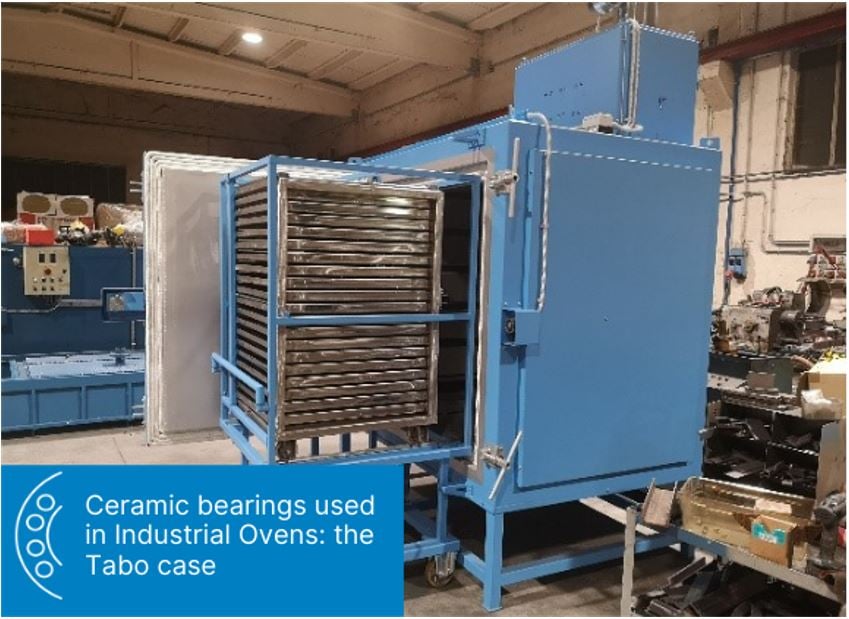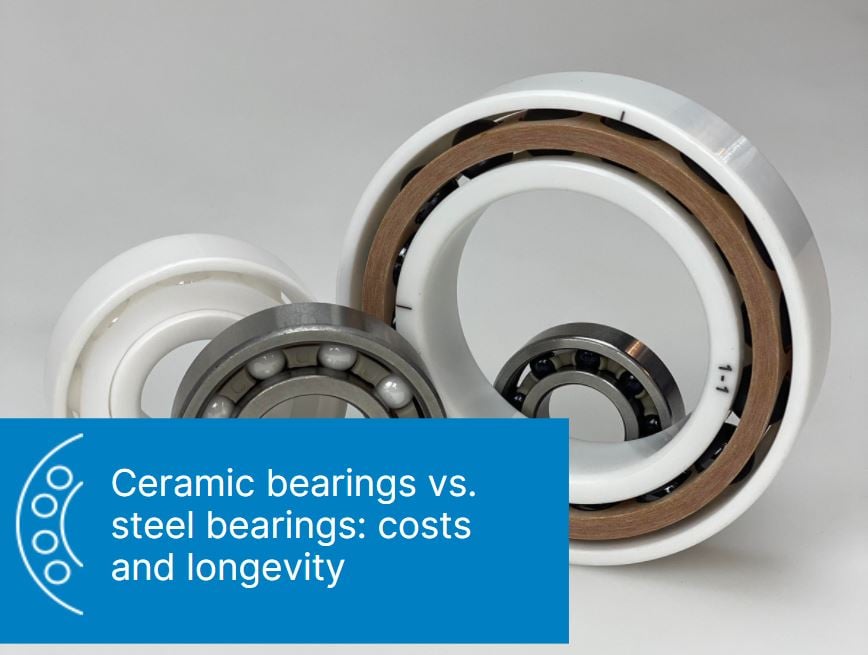
An important aspect to be carefully considered when machines or systems operate in chemically aggressive environments is the corrosion that occurs in mechanical components. In these environments, bearings can be in direct contact with highly aggressive fluids, gases or vapors such as salt water, chlorinated water, salt spray, water vapor, acid or base vapors, acidic or basic liquids. Corrosion can occur very quickly, thus compromising the functionality of the machine or system.
It has become a good design practice to protect the parts in contact with such aggressive elements by using adequate gaskets (both in terms of shape and material) or by enclosing the sensitive mechanical parts inside protective casings or by replacing normal steel with steels or metals which resist corrosion (in the case of bearings, stainless steels can be used instead of standard 100Cr6 steel).
Each of these solutions, however, has drawbacks that must be carefully evaluated. For example, if you choose to protect the mechanical components by enclosing them in a watertight casing, the possible difficulty of implementation is compounded by cost increases, maintenance difficulties as well as possible operating problems (if we take an electric motor and close it in an enclosure without ventilation, in a short time its temperature will reach an unacceptable value). If, however, as in the case of bearings, you choose to use stainless steel bearings instead of standard steel bearings, you have to accept a reduction in performance for an increase in costs. In fact, it should be remembered that the stainless steels that can be used to make bearings can be of two types:
- Martensitic such as AISI 420 and AISI 440
- Austenitic such as AISI 304 or AISI 316
The fundamental difference between the two steels is that martensitic steel can be hardened obtaining a hardness of the races and rolling elements equal to 52 - 55 HRC while austenitic steel cannot be hardened and, therefore, the hardness is very low, not reaching 20 HRC. This means that stainless steel bearings do not provide the same load capacity as 100Cr6 bearings. In particular, the following applies:
- load capacity AISI 304/316 ≈ 7-8% load capacity 100Cr6
- load capacity AISI 420 ≈ 70% load capacity 100Cr6
- load capacity AISI 440 ≈ 80% load capacity 100Cr6
On the other hand, from the point of view of corrosion resistance, austenitic stainless steels are better than martensitic steels thanks to a higher percentage of Cr and the simultaneous presence of Ni.
In summary:
- the replacement of the bearings in 100Cr6 with bearings in stainless steel AISI 304/316 allows to have an excellent resistance to corrosion but a very low load capacity
- the replacement of the bearings in 100Cr6 with bearings in stainless steel AISI 420/440 allows to have a good resistance to corrosion with a reduction of the load capacity of 20-30%.
In addition to assessments of load carrying capacity and corrosion resistance, lubrication issues must be considered. In fact, even for stainless steel bearings, lubrication and therefore the choice of the right lubricant and compliance with maintenance instructions are essential for correct operation.
Today, however, there is an alternative and more effective solution to the critical issues highlighted so far: the full ceramic bearing.
The fundamental aspects that make the full ceramic bearing extremely effective in chemically aggressive environments are:
- The ceramic materials used in the bearings are chemically inert, i.e. they do not corrode. They can also be effectively used to make sliding bearings.
- The load capacities of fully ceramic bearings can be considered equal to those of 100Cr6 bearings.
- Lubrication in full ceramic bearings is not as important as in 100Cr6 bearings; the totally ceramic can also work without lubrication or using the same liquid in which they are immersed as a lubricant (for example water or acids).
- Any cages and gaskets can be made of plastic materials that are equally resistant to chemical attack.
- If there are seals, these can be of the non-sliding type, further improving the smoothness of the bearing.
- The design of the machine or system can be simplified because it is not necessary to provide watertight protection for the bearings.
Learn more about fully ceramic bearings, the characteristics of the materials used and how these can be a very effective solution for situations where steel bearings show their limits, download our brochure on ceramic bearings below.








